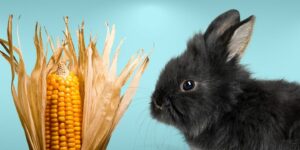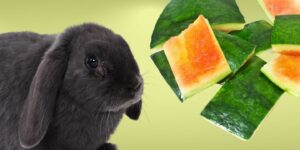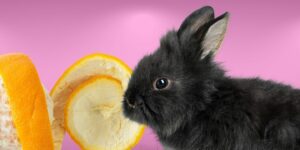Yes, rabbits can eat beet greens. In fact, beet greens are a nutritious and tasty treat for rabbits. However, like all leafy greens, they should be fed in moderation as part of a balanced diet. A balanced diet is crucial for maintaining your rabbit's health, and knowing which foods are safe can help prevent digestive issues and other health problems.
Nutritional Benefits of Beet Greens
Vitamins and minerals found in beet greens
Beet greens are an excellent source of vitamins and minerals. They are high in vitamins A, C, and K, as well as iron, calcium, and potassium. These nutrients are important for maintaining a rabbit's overall health and supporting their immune system.
Antioxidants and phytonutrients in beet greens
Beet greens also contain a variety of antioxidants and phytonutrients that can help protect your rabbit's cells from damage caused by free radicals.
Benefits of fiber in beet greens for rabbit digestion
Fiber is important for maintaining a rabbit's digestive health, and beet greens provide a source of this essential nutrient. The fiber found in beet greens can help to prevent constipation and maintain a healthy gut.
Preparing Beet Greens for Your Rabbit
Washing and inspecting beet greens for quality
Before feeding beet greens to your rabbit, make sure to wash them thoroughly to remove any dirt or chemicals. Inspect the greens for any signs of mold or decay, and discard any leaves that appear to be of poor quality.
Chopping beet greens into appropriate sizes
Although not necessary, you can chop beet greens into smaller pieces to make them easier for your rabbit to eat. This may also help to reduce the risk of choking.
Storing beet greens to maintain freshness
To keep beet greens fresh, store them in a plastic bag or container in the refrigerator. Use them within a few days to ensure they retain their nutritional value.
Introducing Beet Greens to Your Rabbit's Diet
Gradually adding beet greens to avoid digestive upset
When introducing beet greens to your rabbit's diet, start with a small amount and gradually increase the quantity over time. This will help to prevent any digestive upset caused by a sudden change in their diet.
Monitoring your rabbit's reaction to new foods
Keep an eye on your rabbit's behavior and feces after introducing beet greens into their diet. If you notice any signs of diarrhea or discomfort, it may be necessary to decrease the amount of beet greens or try a different type of leafy green.
Rotating beet greens with other leafy greens
To provide your rabbit with a diverse and balanced diet, it's a good idea to rotate beet greens with other suitable leafy greens. This will help to ensure they receive a variety of different nutrients.
Risks and Precautions
Potential risks of overfeeding beet greens
As with all treats, it's important to feed beet greens in moderation. Overfeeding beet greens can lead to an imbalanced diet and may cause digestive issues such as diarrhea or gas.
Oxalates in beet greens and their effect on rabbit health
While beet greens are generally safe for rabbits, they do contain oxalates, which can be harmful in large amounts. However, when fed in moderation, the risk of oxalate toxicity is low.
Pesticides and chemical residue on beet greens
It's important to be mindful of potential pesticide residues on beet greens. Washing the greens thoroughly before feeding them to your rabbit can help to minimize the risk of pesticide exposure.
Other Leafy Greens for a Rabbit's Diet
Recommended leafy greens for rabbits
In addition to beet greens, there are many other leafy greens that can be beneficial to your rabbit's diet, such as:
- Romaine lettuce
- Kale
- Spinach
- Arugula
- Swiss chard
- Collard greens
- Bok choy
The importance of diversity in a rabbit's diet
Feeding your rabbit a variety of different leafy greens can help to ensure they receive a wide range of nutrients and maintain a balanced diet. Rotate the types of greens you offer to keep your rabbit's diet diverse and interesting.
Leafy greens to avoid
Some leafy greens are unsafe or not recommended for rabbits, including iceberg lettuce, which lacks nutritional value, and plants from the nightshade family, such as tomatoes and eggplants, which can be toxic to rabbits.
Frequently Asked Questions
Can rabbits eat beetroot as well as beet greens?
Rabbits can eat small amounts of beetroot, but it should be fed in moderation due to its high sugar content.
How often should I feed my rabbit beet greens?
Beet greens can be fed to your rabbit 1-2 times per week, and remember to abide by the 10% rule, meaning treats should constitute no more than 10% of their daily food intake.
What other treats can I feed my rabbit?
Rabbits enjoy a variety of fruits and vegetables as occasional treats, such as apples, carrots, strawberries, and blueberries. Remember to feed these treats in small quantities and aim for variety.
Conclusion
In conclusion, rabbits can safely eat beet greens as part of a balanced diet. They are a nutritious and tasty treat that can provide your rabbit with important vitamins and minerals. Just remember to feed them in moderation, rotate them with other leafy greens, and always provide plenty of fresh hay and water to maintain your rabbit's health.







